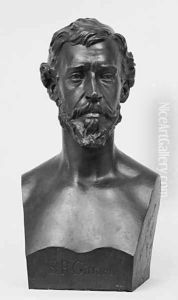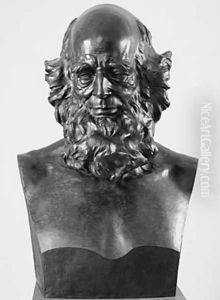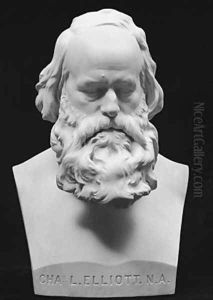Launt Thompson Paintings
Launt Thompson was an American sculptor born on February 8, 1833, in Abbeyleix, Ireland. His family immigrated to the United States in 1847, settling in Albany, New York, which played a significant role in shaping his future career. Thompson showed an early interest in art, and his talents were nurtured in the vibrant cultural environment of New York.
After moving to New York City, Thompson began his artistic training under the tutelage of sculptor Henry Kirke Brown, a prominent figure in American sculpture. This apprenticeship was crucial in developing Thompson's skills and understanding of sculptural form. During the 1850s, he emerged as a talented sculptor, known for his portrait busts and ideal figures. His works from this period reflect a keen observation of human emotion and a mastery of form, which would become hallmarks of his career.
The Civil War era marked a significant phase in Thompson's career, as he created several notable public monuments and memorials that captured the national sentiment. His ability to convey deep emotional resonance through bronze and marble earned him widespread acclaim. Among his notable works are the equestrian statue of General Winfield Scott in Washington D.C. and the monuments at Gettysburg Battlefield, which stand as testaments to his skill and sensitivity to historical significance.
In the latter part of his career, Thompson continued to produce works that were celebrated for their artistic merit and historical importance. He was a member of the National Academy of Design and enjoyed the respect and admiration of his peers. Despite his success, Thompson's later years were marked by personal and financial difficulties, which overshadowed his contributions to American sculpture. He died on September 26, 1894, in Middletown, Connecticut, leaving behind a legacy that has influenced American sculpture.
Thompson's work is characterized by a classical approach, combined with a deep understanding of American themes and values. His sculptures are featured in numerous public spaces and museums, serving as enduring symbols of American history and culture. Despite the challenges he faced, Thompson's artistry continues to be celebrated for its depth, craftsmanship, and emotional power.


